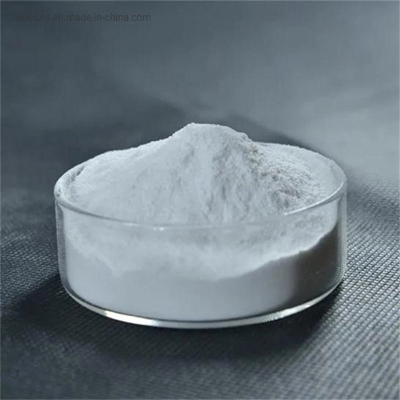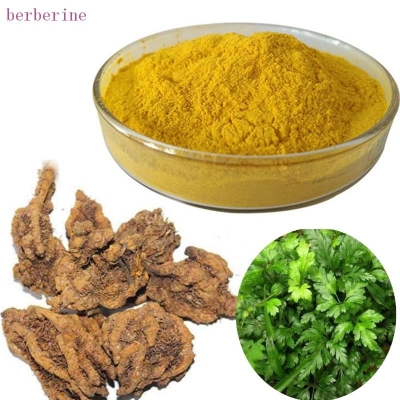The Basics of Photogenics Lecture Series II: Chlorophylics and Photochromes
-
Last Update: 2021-01-07
-
Source: Internet
-
Author: User
Search more information of high quality chemicals, good prices and reliable suppliers, visit
www.echemi.com
, leafy bodyLeaves are the main organ of photocodying, while chloroplast (chloroplast) is the most important organ of photocodying.
(i) the development, morphology and distribution of chlorogretes
1. The chlorophytes of higher plants are developed by the preplastid, which is a nearly colorless mass that exists in the
tissues at the end of
. When the stem-end biogenic tissue forms a follicle base, the endoenome in the bithral membrane of the presumal body folds in several places and extends into the substitut to expand and increase, gradually arranged into pieces under light, and separates from the inner membrane to form a cystic structure of the sac-like sac, while synthesized chlorophyte, so that the presculate develops into chlorophyte. Young leafy greens can split.
2. The leafy bodies of higher-form plants are mostly flat oval shapes, and the size and number of emeralds in each cell vary according to plant species, tissue type, and stage of development. There are about 10 to hundreds of leafy greens in a leafy meat cell, which are 3 to 7 m long and 2 to 3 m thick.
3. The aeroserials in the distributed carbases are more distributed next to the mass membranes in contact with the air, and are usually not seen in the adjacent areas to non-green cells such as epithyl cells and vitial beam cells. This distribution facilitates gas exchange between the yelorosphere and the outside world.
4. The moving serum can move not only with the protosite cyclosphere in the cell, but also with the direction and intensity of light. In low light, the chlorophyte accepts more light energy with a flat face to the light, while in the bright light, the flat plane of the chlorophyte is parallel to the direction of light, so as not to absorb too much strong light and cause the destruction of the structure and loss of function.
(ii) the basic structure of the
is composed of the cleric membrane, the substation and the cystic sac.
1. Chloroplast envelope chloroplast envelope is composed of two layers of unit membrane, two membranes spacing 5 to 10 nm. There is no curlyrogen on the membrane, its main function is to control the entry and exit of substances, maintaining the microenn environment for photomassing. Outer membrane is a non-selective membrane, the molecular weight of less than 10000 substances such as sucrose,
nucleic acids
, inorgable salts, etc. can be freely passed through. Inner membrane is the choice of permeable membrane, CO2, O2, H2O can pass freely; Pi, propylene phosphate, dihydric acid, glycine, etc. need to pass through the translocator on the membrane; sucrose, C5'C7 sugar diphosphate, NADP, PPi and other substances can not pass.
2. The substitina and inclusions are called substrings (stroma) by the underlying substances within the membrane, the substring is water-based and contains a variety of ions, low molecules of
alganic
, as well as a variety of soluble
proteine
and so on. The substrate is the site of carbon assulation and contains all the enzyme systems that reduce CO2 and synthesize starch, of which 1,5-bisphosphonate glycosterase/oxygenase (ribulose1,5bisphosphate carboxylase/oxygenase, Rubisco) accounts for more than half of the total protein
of the substrate
. In addition, the substation contains
amino acids
, proteins,
DNA
, RNA, lipids (glycolipids, phospholipids, thilipids), quaternions (chlorophyloids, cytochrome) and carotenoids (carotenoids) Substances such as leaf alcohols and their synthetic and degraded enzymes also contain enzymes that reduce nitrites and sulfates, as well as the substrates and products involved in these reactions, allowing for a variety of complex
bio-chemical and
reactions in the substrate.
starch grains and plastoglobulus in the substitin, which are reservoirs of starch and lipids, respectively. Grind the lighted leaves into a well-balanced centrifuge, and the white particles that settle at the bottom of the centrifuge tube are starch particles in the leafy body. The proteasome sphere, also known as lipid spheres or pro-phosphor particles, disintegles the membrane system in the leafy body as the leaves age, and the body sphere in the leafy body increases.
3. Cystic sacs (thylakoids) are flat sacs surrounded by a single layer of membrane, film thickness of 5 to 7nm, cystic cavity (lumen) space of about 10nm, the direction of the layer extension is the long axis direction of the chlorophyloid. The cysts fall into two categories: stroma thylakoids, also known as stroma lamella, that stretch without overlapping with each other in the substatum, and grana thlylakoid, or grana lamella, which can be used on its own or with the base sac weight (granum). The portion of the sheet that touches each other is called the stacked region, while the other part is the non-stacked region.
(iii) protein complex
sac membrane contains a variety of sub-base, a variety of components of the protein complex, there are four main categories, namely optical system I. (PSI), optical system II. (PSII.), Cytb6/f complex and ATP enzyme complex (ATPase), they participate in photo-absorption, transfer and transformation, electron transfer, H-transmission and ATP synthesis reactions. Since photosynthesis photosynthesis is carried out on sac-like membranes, the cystic membrane is called photosynthetic membrane. The distribution of these four protein complexes on the cystic membrane is roughly: PSII. mainly exists in the stacking area of the substatume layer, PSI. and ATPase exist in the non-stacking area of the substatume layer and the substat size layer, and the Cytb6/f complex is distributed more evenly. The oxygen-evolving complex (OECD) is located on the inner surface of the membrane, the primary supply of PSII. is located on the inside of the membrane, and the primary primary subject is close to the outer side of the membrane. Plastoquinone (PQ) can move in the hydrophobic area of the membrane. The Cytb6/f complex is in the hydrophobic area of the membrane. PSI.'s electron supply PC is on the inner cavity side of the membrane, while the PSI.restore end's Fd and FNR are on the outer side of the membrane. This distribution of protein complex and its sub-base is beneficial to electron transfer, the transfer of H-plus and ATP synthesis.
ii, photochrome pigmentThe pigment that absorbs light energy in photocodesy reactions is called photochrome pigment and has three main types: chlorosteroids, carotenoids, and algal bile. Higher plants contain the first two types, and algal bile is found only in algae.
(i) the structure and properties of photochromic pigments
1. Chlorophyll is the pigment that makes plants green, accounting for about 1% of the dry weight of green leaves. The emphytes of plants include a, b, c and d. Higher plants contain a, b, curch c, d in algae, while photochemic bacteria contain bacterial currophyll (bacteriochlorophyll). Chl a is blue-green, chl b (Chl b) is yellow-green, molecular weight is 892 and 906, chloroster is a bicarbonate ester, one of the carbihydrate by methanol Esterification, another esterified by aerosols, their molecular form can be written as:
serotonin a and b molecular form is very similar, the difference is that aerosol a than b two hydrogen less than one oxygen. The structural difference between the two is that only one methyl (-CH3) is replaced by aldehyde (-CHO) on the B-ring of chloroplasta.
molecule contains the "head" of a porphyrin ring and the "tail" of a leafy alcohol (phytol, phytol). The rings are made up of four pyridoxine rings connected to four methyl (-CH) and are the common basic structure of various chlorosterins. The central complex of the ring is a magnesium atom, which tends to have a positive charge, while the nitrogen atom associated with it is negatively charged, so that the "head" is polar and hydro-hydro-hydro. There is also an isotope ring (a ring containing the same element) containing a carbide base, the previous of which is combined with methanol by ester bonds. Ring D has an acrylic side chain with ester bonds and chlorophyl, chlorophyl is composed of four isoprene units of birch, is pro-fat, can be extended into the sac lipid layer, so chlorophyte can be directed arrangement.
conjugated double bonds and central magnesium atoms on the ring are easily stimulated by light and cause electrons to lose, which determines the special photochemical properties of chloroelectrin. Magnesium in the ring can be replaced by H, Cu2, Zn2, etc. When replaced by H-plus, brown magnesium chlorophytin (pheophytin, Pheo) is formed. De-magnesium chloroplast in the H-plus is replaced by Cu2-plus, the formation of copper chloroplast, the color is more bright and stable than the original chloroplast. According to this principle, green specimens can be preserved using copper acetate treatment. The aerosol is an ester and is therefore insoluble in water.
Usually an organic solvent containing a small amount of water, such as 80% acetone, or 95% ethanol, or acetone:ethanol: water: 4.5:4.5:1 mixture to extract chlorosterone in the leaves, used to determine chlorosterone content. The reason for using organic solvents containing water to extract yelorotin, because the kelorotin and protein binding is very strong, need to be hydrolysed to be extracted.
2. Carotenoid carotenoids (carotenoids) are composed of 8 isoprene, containing a series of conjugated double bonds, each end of the molecule has an unsaturated replacement cyclohexene, also known as violet ketone ring, they are insoluble in water and dissolved in organic solvents. Carotenoids include carotene (carotene, C40H56O2) and lolatin (xanthophyll, C40H56O2). The former is orange and the latter yellow. Carotene is an unsaturated hydrocarbon with α, β, γ isomer, of which β carotene has the highest content in plants.
is an alcohol derived from carotene, also known as carotenol, which usually has a ratio of about 2:1 between the levels of loatin and carotene in the leaves.
Carotenoids, in addition to absorbing the transfer of light energy, can also escape energy in bright light, such as β-carotene is a single-line molecular oxygen (1O2) annihilation agent, with aerosol protection from harm (photoprotection).
generally speaking, the ratio of yelorosterin to carotenoids in the leaves is about 3:1, so normal leaves always appear green. In autumn or in poor environments, the leaf is more easily degraded, the quantity is reduced, and carotenoids are more stable, so the leaves appear yellow. Carotenoids are always present in the chlorophytes of higher plants, together with chlorophytes, as well as in the chromosomes of fruits, crowns, pollen, column heads and other organs.
phycobilin is found only in red and cyanobacteria, mainly in the three categories of phycoerythrin, phycocyanin and allophycocyanin, the former being red and the latter blue. Their raw color clusters bind firmly to the protein with co-price bonds. The four cytocytoplastic rings in the algal bile molecule form a straight-chain conjugate system that contains no magnesium and no chlorosterol chain. Algal bile also has the function of collecting light energy.
because the light energy absorbed by carotenoids and algal bile can be passed on to chlorosteroids for photosynthetic use, they are called photosynthetic auxiliary pigments.
。
This article is an English version of an article which is originally in the Chinese language on echemi.com and is provided for information purposes only.
This website makes no representation or warranty of any kind, either expressed or implied, as to the accuracy, completeness ownership or reliability of
the article or any translations thereof. If you have any concerns or complaints relating to the article, please send an email, providing a detailed
description of the concern or complaint, to
service@echemi.com. A staff member will contact you within 5 working days. Once verified, infringing content
will be removed immediately.







